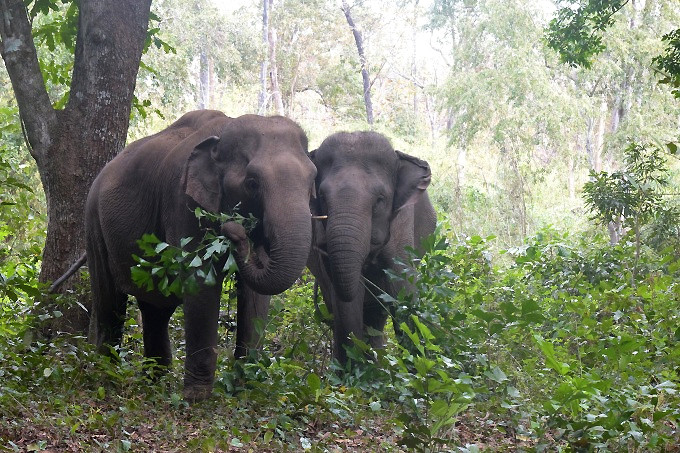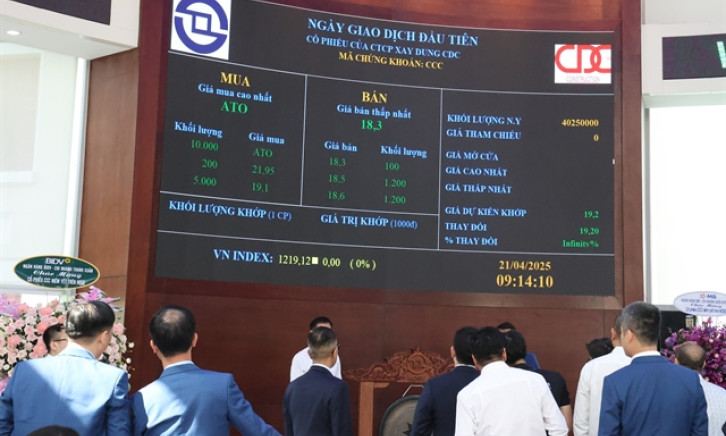Discovering Vietnam's hidden gems: a journey off the beaten path
Beyond the vibrant chaos of bustling cities and the allure of famous landmarks, Vietnam also has a secret side—hidden treasures where landscapes, villages, and age-old traditions await travelers.
1. Pu Luong

Situated 160 kilometers (100 miles) from Hanoi, Vietnam’s capital, Pu Luong is a destination for those who seek a quiet and relaxing journey.
Nestled between valleys and mountains, Pu Luong Nature Reserve offers breathtaking landscapes and rich biodiversity. It is home to several rare species, such as Delacour's langur, and over 110 bird species, making it a vital area for conservation in Vietnam. Visitors can explore terraced rice fields, misty forests, and tranquil villages. Unlike more crowded tourist destinations, Pu Luong retains a serene and untouched charm, making it perfect for those seeking an off-the-beaten-path experience. There are many nature-focused activities for travelers to enjoy. You can go trekking on mountain trails, cycling along rice terraces, and exploring hidden waterfalls.
A tourist couple who visited Pu Luong in November 2023 shared their love for the location in their review on Tripadvisor: "Fabulous trip. Beautiful valley among high mountains with terraced paddy fields. Locals harvesting rice by hand - extremely hard work, even in the hot weather too."
2. Dak Lak

Yok Don National Park in Dak Lak Province offers an ethical elephant experience that celebrates conservation and education. Once known for elephant riding, the park shifted to a sustainable model where visitors observe elephants in their natural habitat. This approach prioritizes animal welfare while fostering an appreciation for these magnificent creatures. Beyond elephants, Yok Don boasts trekking paths, birdwatching, and boat rides on the Serepok River.
Yok Don is a nature-focused alternative to Da Lat, a famous tourist location. Situated around 200 kilometers (125 miles) from Da Lat, Yok Don provides an escape into the heart of the Central Highlands.
Another hidden gem is the Dray Nur and Dray Sap Waterfalls, located 30 kilometers from Dak Lak's capital city Buon Ma Thuot, where you can enjoy the beauty of cascading waters amidst greenery without the typical hustle and bustle of tourist hotspots.
3. Pleiku

Pleiku, a charming city in Gia Lai Province near Dak Lak, is renowned for its landscapes and cultural treasures. Among its highlights is Minh Thanh Pagoda, a temple that blends traditional Vietnamese and Japanese architectural styles. Surrounded by gardens and ponds, the pagoda features intricate carvings, a towering pagoda structure, and an ambiance for reflection. Visitors are certain to be captivated by its giant bronze Buddha idol and panoramic views of Pleiku from the temple grounds.
An American tourist, nicknamed Penny5555, shared their experience of Minh Thanh Pagoda on TripAdvisor thus: "Admittedly, my experience is limited but I found this pagoda to be the most impressive one on our trip. While the complex is fairly large, the feeling is intimate and peaceful. One of my favorite parts was the line of Buddhas - with a laughing one at the far right. He made my heart sing just looking at him."
Another location you can visit in Pleiku is the Chu Dang Ya volcanic crater renowned for its beauty. During the rainy season, Chu Dang Ya is enveloped in greenery, with fields of taro and sweet potatoes stretching across the landscape. In the dry season, the hillsides come alive with wild sunflowers in full bloom, leaving flower enthusiasts and photographers awestruck. The volcano's fertile volcanic soil supports a thriving agricultural community that cultivates crops such as taro and maize.
4. Cham Islands
The Cham Islands, located off the coast of Quang Nam Province, are a marine paradise known for diving and snorkeling. This UNESCO Biosphere Reserve boasts clear turquoise waters, vibrant coral reefs, and abundant marine life, including colorful fish, sea turtles, and exotic invertebrates.
Despite their natural beauty, the islands remain a hidden gem, relatively untouched by mass tourism, offering a more secluded and intimate experience. The dive sites surrounding the islands cater to all skill levels, featuring shallow coral gardens ideal for beginners and deeper waters with striking underwater landscapes that appeal to experienced divers.
Snorkeling tours let visitors explore the reefs closer to the surface. Beyond water adventures, the Cham Islands offer charming fishing villages, sandy beaches, and tropical forests.
Cham Islands offer a refreshing alternative to Hoi An's bustling charm. While Hoi An entices visitors with its well-preserved ancient town, vibrant lantern-lit streets, and culinary delights, the Cham Islands provide an escape into nature's tranquility.
5. Mai Chau

Mai Chau, located in Hoa Binh Province that bordes Hanoi, is a valley nestling among mountains and rice paddies, a true hidden gem waiting to be discovered. It is known for its traditional stilt houses made of bamboo, rattan, and wood and roofs thatched with palm leaves or grass. Their design emphasizes ventilation and is perfect for the climate of the northern region.
Mai Chau is home to the White Thai ethnic group, whose culture is showcased through local crafts, music, and festivals, and traditional brocade weaving that produces items like scarves, skirts, and bags with intricate patterns and vibrant colors.
Their music has a gentle lilt and often features ethnic instruments like the dan tinh (a string instrument), khen be (a type of bamboo pipe) and drums.
Exploring Mai Chau is an adventure in itself. Visitors can cycle or trek through picturesque landscapes dotted with villages, offering glimpses into an unspoiled way of life.
Among its hidden wonders is Chieu Cave, a natural marvel adorned with impressive stalactites and stalagmites. The climb to the cave is rewarded with panoramic views of the valley below, making it a highlight for those seeking anoff-the-beaten-path experience in Vietnam.
6. Cao Bang

Cao Bang Province which borders China is home to the majestic Ban Gioc Waterfall, Vietnam’s largest, and the stunning Nguom Ngao Cave and Pac Bo Cave, where President Ho Chi Minh once lived.
Cao Bang’s ethnic diversity, with communities like the Tay, Nung, and Hmong, enriches the region with vibrant festivals, unique crafts, and varied cuisine. Festivals such as the Long Tong (Field Plowing) Festival of the Tay people celebrate agricultural blessings with traditional rituals, games, and folk performances. The Nung are known for their intricate silver jewelry and bamboo crafts, while the Hmong excel in producing colorful brocade fabrics featuring geometric patterns.
Cao Bang’s cuisine reflects its cultural mosaic with dishes like pho chua (sour noodle soup), banh cuon (steamed rice rolls served with bone broth), and khau nhuc (braised pork with taro), offering a rich blend of flavors and ingredients unique to the region.
Ideal for trekking and cultural immersion, Cao Bang is also a gateway to nearby wonders like Ba Be Lake in Bac Kan Province and the Dong Van Karst Plateau in Ha Giang.






